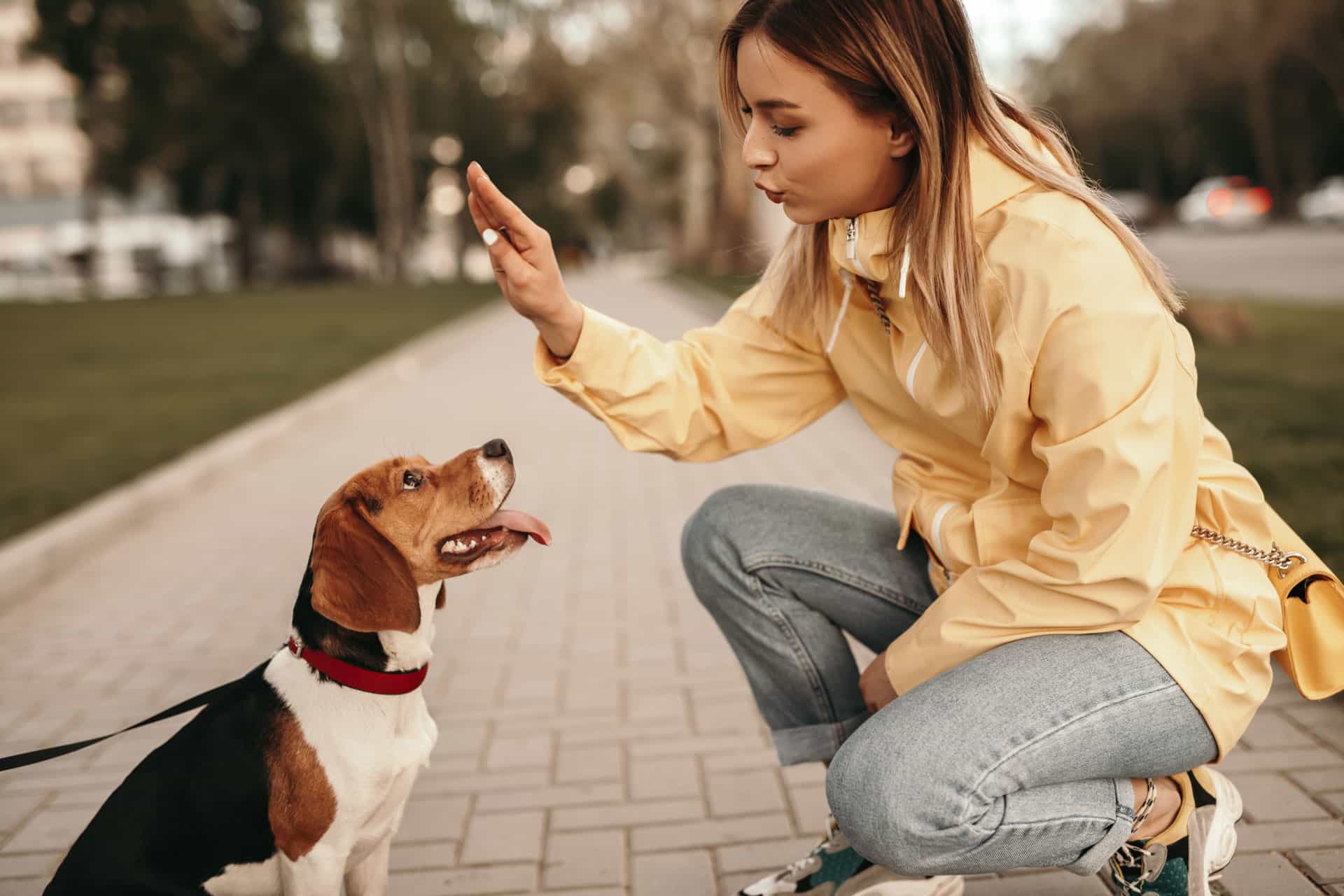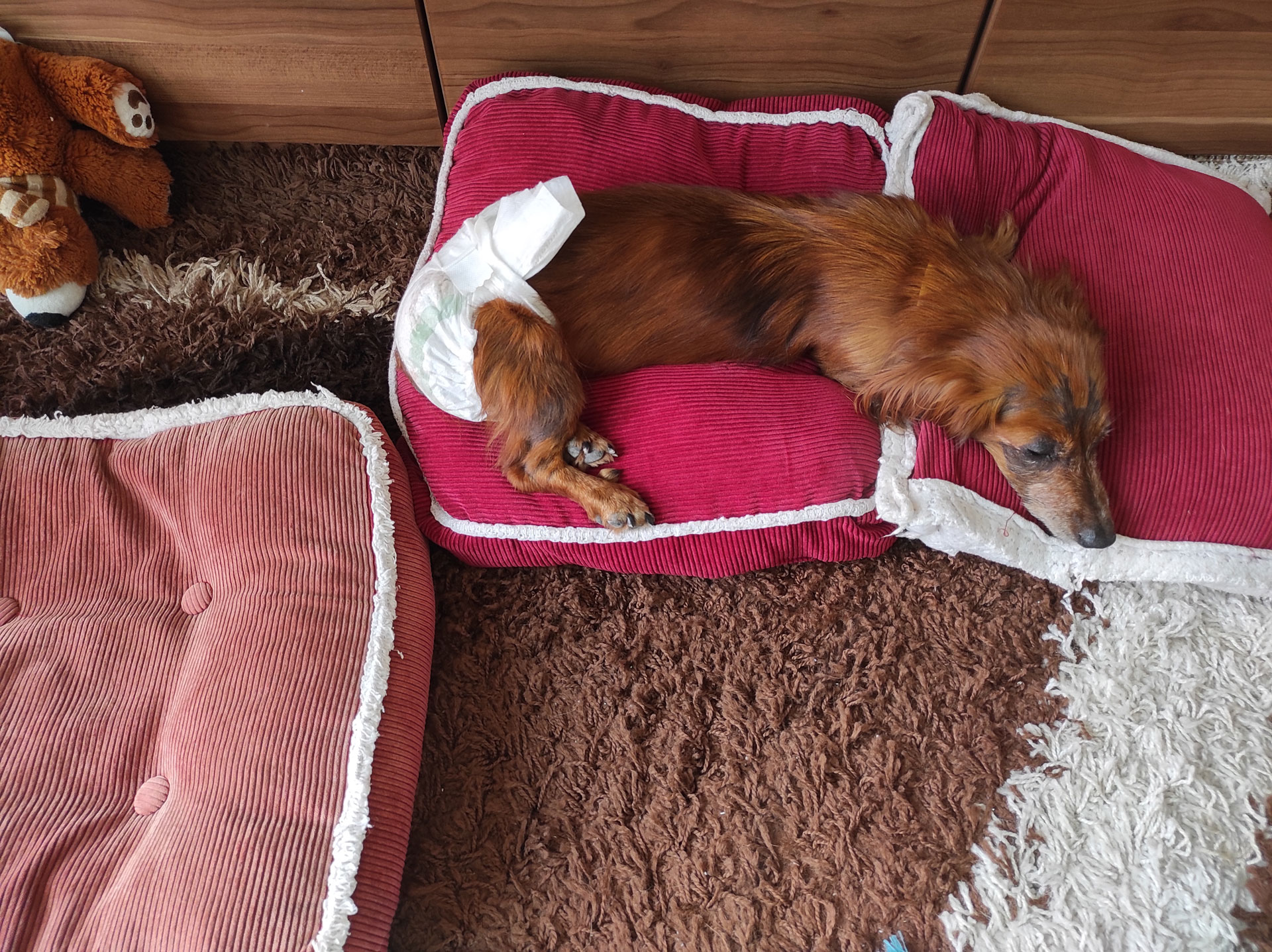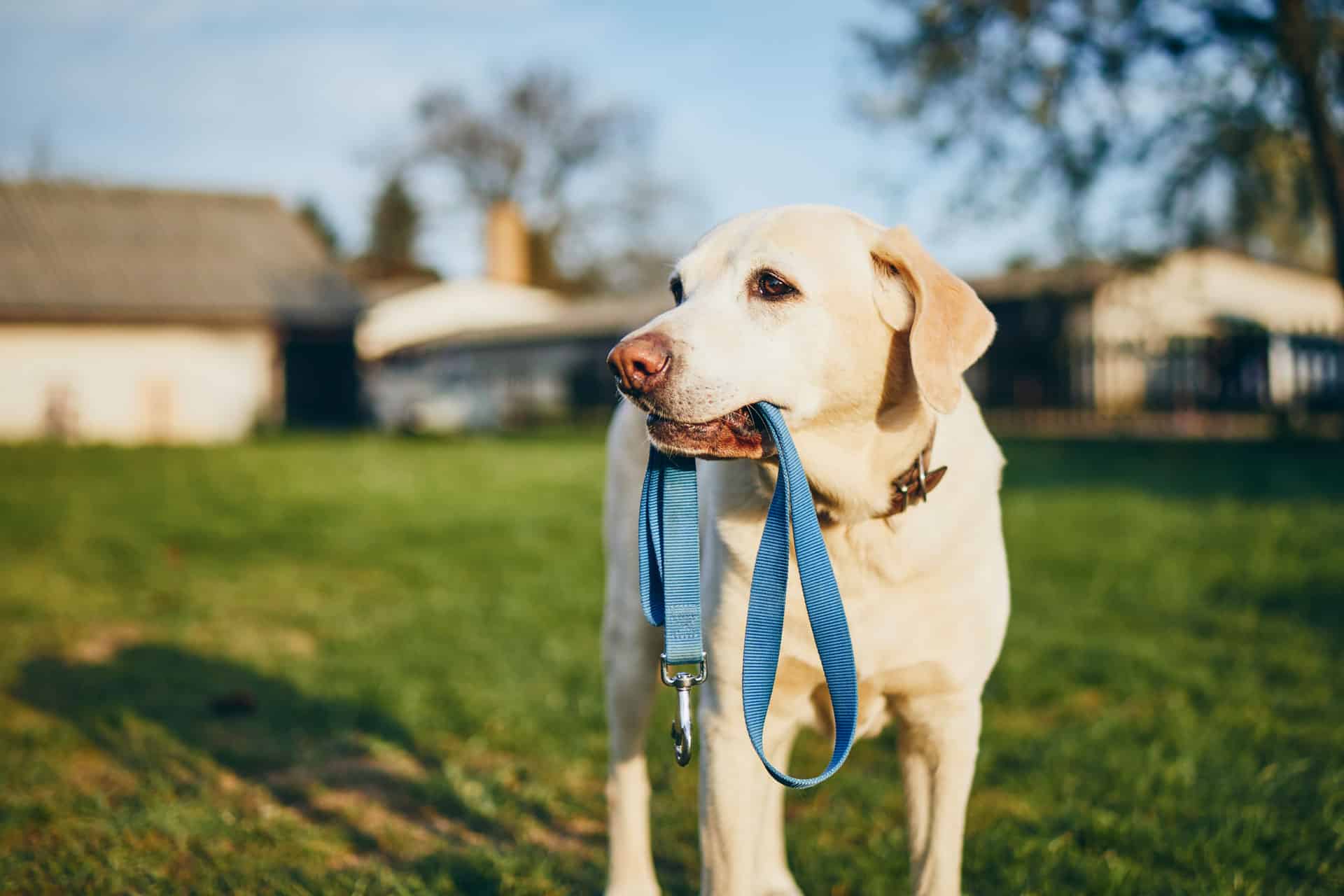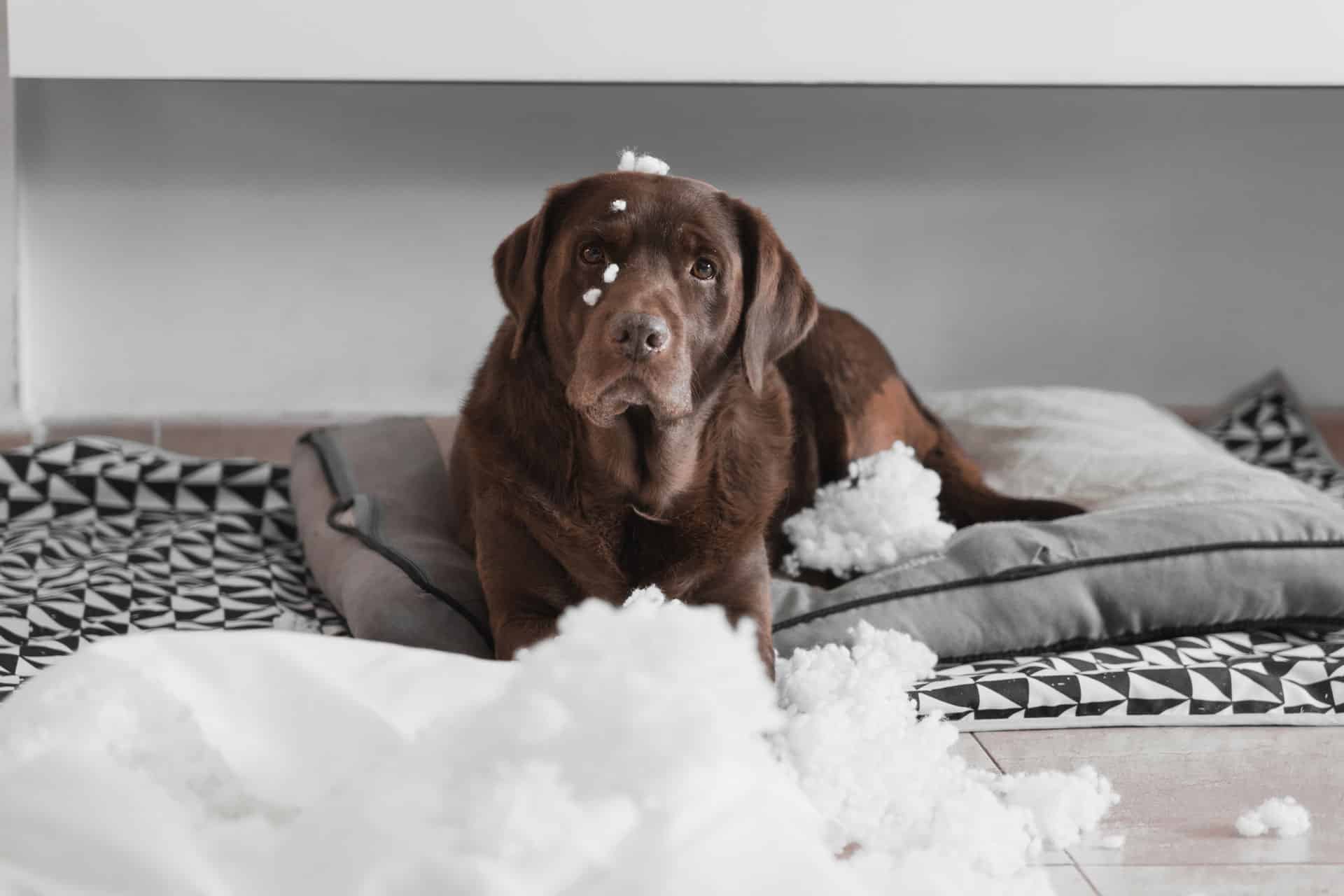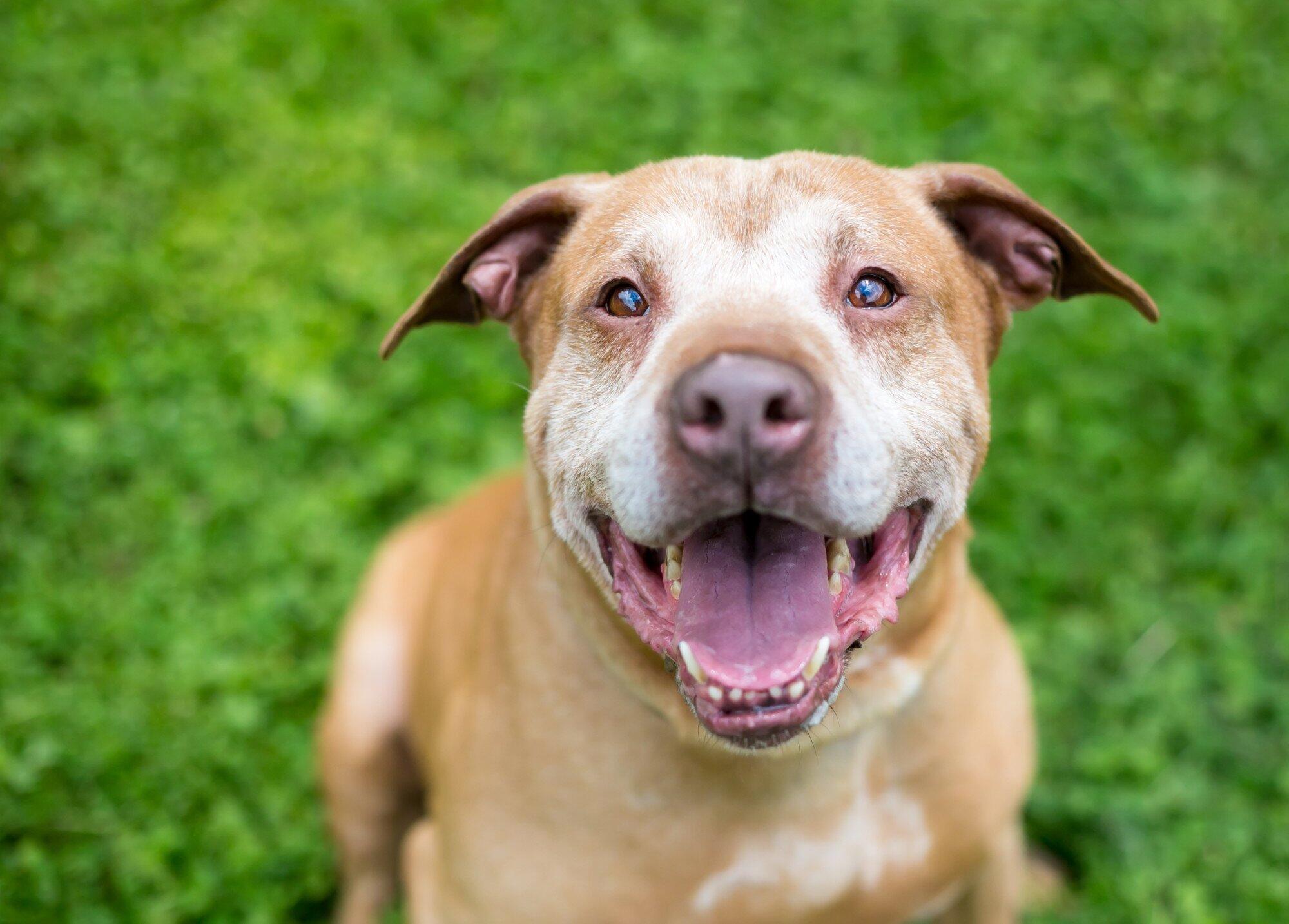Introduction
Are you a dog owner who wants your furry friend to be well-behaved and obedient? Then, you need to invest some time in training them. Dog training is not just about teaching basic commands such as sit, stay, and come; it’s also about building a strong bond between you and your pet. Proper dog obedience training can make all the difference in the world for both of you! So let’s dive into why dog training is so important and what techniques are available to help train your furry best friend.
A brief overview of the importance of dog training
Dog training is an essential part of responsible pet ownership. It goes beyond just teaching your furry friend how to perform tricks and obey commands. The importance of dog training cannot be overstated, as it helps in shaping a well-behaved and obedient dog.
Proper dog training helps prevent behavioral problems like aggression, excessive barking, chewing on furniture or shoes, and many others that can become frustrating for both the owner and their neighbors. It also ensures safety for your dog by teaching them boundaries they should not cross.
Another important aspect of training is socialization; dogs who aren’t exposed to various people, animals, and environments early on may develop anxiety when encountering new situations later in life. Training helps create a deeper bond between owners and their pets while allowing for better communication.
Moreover, obedience training provides mental stimulation for dogs which promotes good health by keeping them mentally alert throughout their lifetime. Proper dog training sets the foundation for creating a happy home environment with healthy relationships between owners and their beloved pets.
Explanation of what the article will cover
Welcome to this article about the importance of dog training! In this post, we will explore the different types of training that every dog owner should know to raise a happy and well-behaved pup.
Firstly, we will discuss obedience training. This type of training is crucial for teaching dogs basic commands and instilling good behavior habits in them. We’ll cover techniques such as positive reinforcement and clicker training, as well as common commands like sit, stay and come.
Next up is house training – an essential part of owning a dog that can often be challenging without proper guidance. We’ll explain what it means to house train your pet, why it’s important for both dogs and owners, tips on how to do it effectively (such as creating a schedule or using crate training), plus advice on dealing with accidents or marking problems.
Of course, leash training is another necessary aspect of raising a well-trained dog. Walking your furry friend on a leash requires patience and consistency from both you and your pet – but when done correctly with positive reinforcement methods such as rewarding good behavior or using appropriate walking techniques – can make walks much more enjoyable for all involved parties.
We will address some common behavioral issues that many dogs experience (chewing furniture, excessive barking, etc) along with their causes; offering helpful solutions such as redirecting bad behavior into playtime activities/positive reinforcement methods rather than punishment.
This post aims at providing comprehensive information about various ways one could train his/her pets so they turn out not just obedient but also healthy & happy individuals who make great companions!
Obedience Training
Obedience training is an essential part of owning a dog. It’s not just about teaching your furry friend to sit and stay on command; it’s also about establishing yourself as the pack leader and ensuring that your dog knows how to behave in different situations.
Positive reinforcement techniques are among the most effective methods for obedience training. This includes rewarding good behavior with treats, toys, or verbal praise, which helps dogs understand what they’re doing right.
Clicker training is another popular technique used in obedience training. This involves using a clicker to signal when your dog has done something well or correctly.
Teaching basic commands such as “sit,” “stay” and “come” can help keep your pet safe while improving their overall behavior. These commands should be practiced regularly until they become second nature for both you and your pet.
Obedience training also helps build trust between you and your dog by establishing clear communication and expectations. By following a consistent routine of positive reinforcement-based training, you’ll create a stronger bond with your furry companion that will last for years to come.
Definition of obedience training
Obedience training is a crucial aspect of dog training that aims to teach dogs how to obey basic commands and behave well in various situations. It involves the use of positive reinforcement techniques, such as treats or praise, to encourage desirable behavior and discourage undesirable ones.
The primary goal of obedience training is to establish a strong bond between the owner and their dog while building mutual trust and respect. By teaching dogs basic commands like sit, stay, come, heel, etc., owners can effectively communicate with their pets and prevent unwanted behaviors such as barking excessively or jumping on people.
Obedience training also helps promote good manners in dogs by teaching them proper socialization skills necessary for interacting with other animals and humans. Moreover, it can be used for specific purposes like therapy work or service dog tasks that require higher levels of obedience.
Obedience training is essential for any responsible pet owner who wants a happy life with their furry friend. With patience and consistency in using positive reinforcement techniques during training sessions, any dog can learn valuable skills that will benefit both them and their owners.
Importance of obedience training for dogs
Obedience training is an essential part of dog ownership. It teaches dogs the necessary skills to be well-behaved and obedient, making them easier to manage in different situations.
Firstly, obedience training helps establish a clear hierarchy between the dog and its owner. Dogs are pack animals, which means they need structure and guidance in their lives. With obedience training, owners can assert themselves as the leaders of the pack, allowing for better communication and understanding between both parties.
Secondly, obedience training provides mental stimulation for dogs. Dogs are intelligent creatures that require mental challenges to keep them engaged and stimulated. Obedience training offers just that – it gives dogs a sense of accomplishment when they successfully learn new commands or perform tasks correctly.
Thirdly, obedience training promotes safety for both the dog and its surroundings. Training ensures that dogs respond appropriately to commands such as “come” or “stay,” reducing their chances of getting into dangerous situations like running into traffic or approaching strangers aggressively.
Obedience training strengthens bonds between owners and their furry companions through positive reinforcement techniques such as treats or praise. This creates a positive association with learning for pets while fostering trust between pet parents and their pups.
Incorporating regular obedience training into your routine is vital not only for your pet’s safety but also for building strong relationships with them based on respect and trust.
Techniques for obedience training
Obedience training is an essential aspect of a dog’s development that helps them become well-behaved and disciplined pets. Positive reinforcement is one of the most effective techniques for obedience training, as it encourages dogs to repeat desirable behaviors by rewarding them with treats, praise, or affection.
Clicker training is another effective technique that involves using a small handheld device that makes a clicking sound when pressed. The click serves as a signal to your dog that they have done something right and will receive a reward.
When starting obedience training, begin with simple commands such as ‘sit’, ‘stay’, and ‘come’, before moving on to more complex ones like ‘heel’. By breaking down the training into smaller steps, you can make it easier for your dog to understand what is expected of them.
Consistency in your approach to obedience training is also important. Use clear commands and signals so that your dog understands what you want from them. Avoid using different words or gestures for the same command as this may confuse their learning process.
Patience and persistence are key when undertaking obedience training with your furry friend. Every dog learns at their own pace, so be prepared to give plenty of positive reinforcement along the way!
Common commands to teach
Teaching your dog basic commands is essential for their safety and your peace of mind. The “sit” command, for example, can prevent a dog from jumping on people or running into the street. To teach this command, hold a treat above their head and move it back towards their tail while saying “sit.” As soon as they sit down, give them the treat and praise them.
The “stay” command is another important one to teach your furry friend. This will help keep them from running off or getting into dangerous situations. Start by having your dog sit in front of you, then say “stay” while holding up your hand like a stop sign. Take a step back and reward them if they stay put.
The “come” command is crucial in emergencies when you need to call your dog back to you quickly. Start by calling out their name in an excited tone followed by the word “come.” When they come to you, reward them with treats and praise.
Other common commands include “down,” which involves having the dog lie down on the ground; “heel,” which means walking calmly beside you without pulling on the leash; and “leave it,” which teaches dogs not to grab things they shouldn’t have.
Remember that consistency is key when teaching these commands. Practice regularly with positive reinforcement techniques such as treats, toys, or verbal praise – whatever motivates your pup!
House Training
House training is an essential part of a dog’s development. It not only helps keep your home clean but also teaches the dog discipline and self-control. House training involves teaching your dog where it is appropriate to urinate and defecate, as well as how to signal when they need to go outside.
To start house training, begin by setting up a routine for feeding and taking your dog outside. This will help them establish a schedule for when they need to go potty. When you take them out, lead them directly to their designated spot and give the command “Go potty.”
If you catch your pup in the act of going inside, interrupt them with a firm “no” or clap your hands loudly. Then immediately take them outside to finish their business.
Accidents are common during house training, so be patient with your pup and remember that accidents happen while they learn what behavior is expected of them.
Crate training can also be helpful for house training as dogs naturally avoid eliminating in their sleeping area. However, never leave a puppy in its crate for more than four hours without a break.
With consistency and patience on both ends- yours’ and & pups’, house-training can become second nature over time!
Definition of house training
House training, also known as potty training or housebreaking, refers to the process of teaching a dog to eliminate in an appropriate location. This is typically done outdoors but can also involve designated indoor areas like pee pads or litter boxes.
The importance of house training cannot be overstated. Not only does it prevent accidents and messes inside the home, but it also helps establish a routine for your dog’s bathroom needs and promotes good hygiene habits.
When it comes to techniques for house training, crate training is a popular method that involves confining your dog in a small space when unsupervised until they learn to hold their bladder and bowels. Scheduling regular potty breaks throughout the day can also help establish consistency.
Common problems during house training include accidents inside the home and marking behavior. Accidents can be addressed by reinforcing positive behavior with treats and praise while immediately cleaning up any messes without scolding or punishment. Marking behavior may require additional steps such as neutering/spaying or hiring professional trainers/behaviorists for more severe cases.
Proper house training is essential for creating a harmonious living environment between you and your furry friend.
Importance of house training for dogs and owners
House training is an important aspect of dog ownership that cannot be overlooked. Not only does it ensure a clean and hygienic home environment, but it also helps establish trust between dogs and their owners.
One of the main reasons why house training is crucial for both dogs and owners is because it prevents accidents from occurring inside the house. Dogs who are not properly trained may relieve themselves on carpets, furniture, or other household items, causing damage to property and creating unpleasant odors.
House training can also help build communication between dogs and their owners by establishing boundaries and expectations. By teaching dogs what they should eliminate, owners can prevent misunderstandings that often arise when trying to communicate with non-verbal animals.
Moreover, proper house training can reduce stress levels for both dogs and owners as it creates a harmonious living space where everyone feels comfortable. This in turn strengthens the bond between humans and their furry companions leading to happier lives overall.
House training plays an essential role in responsible dog ownership. By taking time to teach your furry friend good habits early on through consistent positive reinforcement techniques such as crate or schedule training; you’ll create a lifelong relationship with your pet based upon mutual understanding, respect,and love.
Techniques for house training
House training is a crucial aspect of dog training. It involves teaching your dog where and when to relieve themselves, as well as where they should sleep and eat. There are several techniques you can use to house-train your dog effectively.
One popular technique is crate training. This involves using a crate or kennel as the designated sleeping area for your dog. The idea behind crate training is that dogs do not like to soil their sleeping areas, so they will learn to hold it until they are taken outside. Crate training also helps prevent destructive chewing behaviors when unsupervised.
Another effective technique for house training is schedule training. This involves establishing a consistent routine for feeding and walking your dog, which in turn encourages them to establish regular patterns for relieving themselves.
It’s important to remember that accidents may still occur during the house-training process, especially with puppies or rescue dogs who may not have had prior training. When this happens, it’s important not to punish the dog but instead redirect their behavior by quickly taking them outside so they associate going potty with being outdoors.
Consistency and patience are key when using these techniques for house-training your furry friend!
Common problems and how to address them
One of the most common problems dog owners face during training is accidents and marking inside the house. Potty training can be a frustrating experience, but with patience and consistency, it can be achieved successfully.
The first step in addressing this problem is to establish a schedule for your dog’s potty breaks. Take your dog outside frequently, especially after meals or naps. When your dog successfully goes outside, reward him with praise and treats.
If you catch your dog having an accident inside, interrupt him by clapping or saying “No!” firmly. Then immediately take him outside to finish his business. Do not punish or scold your dog for accidents inside as it will only confuse him.
Marking behavior is another issue that needs attention during house training. Dogs mark their territory by urinating on objects like furniture legs, walls, or curtains indoors which can be frustrating for pet owners.
To address this problem, consider crate training as it restricts dogs from going around leaving marks wherever they want while also giving them a sense of security when done correctly
Another essential thing to do is always keep an eye on your pup and prevent access to areas where he may feel tempted to leave his mark until fully trained.
By following these tips consistently over time will help solve many common potty-training problems so don’t give up!
Leash Training
Leash training is essential for both dogs and owners. It helps keep your dog safe while also creating a stronger bond between you two. However, teaching your dog to walk on a leash can be challenging, especially if they are not used to it.
One of the most important techniques in leash training is positive reinforcement. Rewarding your dog when they walk calmly beside you or follows commands will encourage them to continue this behavior. Consistency is key, so make sure everyone who walks the dog uses the same technique.
Walking techniques are also crucial in leash training. Start with short, frequent walks and gradually increase distance and time as your dog becomes more comfortable. Teach them basic commands such as “heel” or “stop” to help control their movements.
Common problems during leash training include pulling, aggression towards other dogs or people, and distractions from smells or sounds. Address these issues by redirecting their attention with treats or toys and practicing obedience commands consistently.
With patience and consistent practice, any dog can become well-behaved on a leash through proper training techniques like positive reinforcement and walking control methods!
Definition of leash training
Leash training is an essential aspect of dog training that involves teaching your furry friend to walk on a leash without pulling or tugging. At its core, leash training aims to provide pet owners with greater control over their dogs during walks and outdoor activities.
To start, it’s important to understand that leash training should be approached gradually and patiently. Introducing a dog to a leash can be overwhelming at first, so it’s best to begin by allowing your pet time to get used to the equipment around its neck before venturing out.
Once your pup has grown accustomed to wearing the harness or collar, you can gradually introduce them to walking outdoors while on a leash. Positive reinforcement techniques such as treats and praise can help make this process more enjoyable for both you and your dog.
During the initial stages of leash training, it’s crucial to teach your dog basic commands such as “heel” and “stop.” These cues will allow you better control over their movements while they are attached to the lead.
Successful leash training requires patience, consistency, and positive reinforcement techniques. By investing time in this essential aspect of dog obedience training early on in your pet’s life, you’ll enjoy many happy years of exploring together!
Importance of leash training for dogs and owners
Leash training is one of the most crucial aspects of dog training that every owner should prioritize. It involves teaching your dog how to walk on a leash without pulling, jumping, or biting. Leash training helps you establish control over your dog while ensuring its safety and that of others.
Leash-trained dogs are well-behaved pets who understand boundaries and limitations. They know when to stop, stay put, or move forward based on commands given by their owners. This skill ensures they don’t run off into danger, chase after other animals, or get hit by vehicles.
Moreover, leash training contributes significantly to the quality of life for both dogs and owners. Dogs love going out for walks as it allows them to explore new environments while getting exercise and fresh air. Owners enjoy these bonding moments with their furry friends while experiencing reduced stress levels associated with walking together.
Leash-trained dogs make happier and healthier companions who have a greater sense of freedom under control through proper obedience techniques taught during this type of training session than those left untrained in this area which can lead to some really dangerous situations that could be prevented otherwise!
Techniques for leash training
When it comes to leash training, there are a variety of techniques that can be used to teach your dog how to walk on a leash without pulling or becoming aggressive. One effective technique is positive reinforcement, where you reward your dog for good behavior with treats or praise.
Another important aspect of leash training is finding the right walking technique. For example, some dogs respond well to the heel command and prefer walking beside their owner while others may prefer being in front but under control.
It’s also important to address any common problems that may arise during leash training such as pulling or aggression. To address these issues, try using a no-pull harness or practicing desensitization exercises with other dogs and people.
Consistency is key when it comes to successful leash training. Make sure you use the same commands and techniques every time you go out for a walk with your dog. Over time, they will learn what behaviors are expected of them and become more comfortable on walks.
Remember that each dog is unique and may require different techniques for successful leash training. Experiment with different methods until you find one that works best for both you and your furry friend!
Common problems and how to address them
Common problems that many dog owners face during training include pulling on the leash and aggression toward people or other dogs. Pulling on the leash can make walks frustrating and even dangerous, while aggression can lead to serious consequences for both the dog and those around them.
To address pulling on the leash, it’s important to teach your dog proper walking techniques through positive reinforcement. One method is to stop moving forward whenever your dog pulls, only continuing when they return to your side. You could also try using a front-clip harness or head halter to discourage pulling.
Aggression towards people or other dogs requires more specialized attention from a professional trainer. It’s important not to punish aggressive behavior as this can escalate the problem instead of solving it. Instead, focus on redirecting their behavior with positive reinforcement training techniques like clicker training.
Ultimately, preventing these common problems in the first place is key through consistent and ongoing training with clear expectations and boundaries set by you as an owner.
Addressing Common Behavior Problems
Dogs can exhibit a range of unwanted behaviors, including chewing, barking, and jumping. To address these common behavior problems, it’s important to first understand the root cause of each behavior. Chewing may be a sign that your dog is bored or anxious, while excessive barking could indicate separation anxiety or territorial issues.
Once you’ve identified the underlying cause of your dog’s unwanted behavior, there are several techniques you can use to redirect their behavior positively. For example, if your dog chews on furniture or shoes due to boredom or anxiety, try providing them with plenty of toys and mental stimulation activities like puzzle feeders.
Positive reinforcement training is also an effective tool for addressing common behavior problems. By rewarding good behavior with treats and praise, you encourage your dog to continue exhibiting those behaviors while discouraging negative ones.
It’s important to remember that addressing common behavior problems takes time and patience – there are no quick fixes when it comes to changing your dog’s habits. However, by using positive reinforcement techniques and understanding the root causes behind unwanted behaviors, you can help your furry friend become a well-behaved member of the family.
Definition of common behavior problems
Dogs are known to have certain behavioral problems that can be frustrating for owners. Chewing, barking, and jumping are among the most common issues faced by pet owners.
Chewing is a natural behavior for dogs as it helps them relieve stress and boredom. However, excessive chewing can damage furniture and other household items. Barking is another problem that many dog owners face. While barking is a way of communication for dogs, incessant barking can disturb neighbors and cause friction in the community.
Jumping is yet another issue that some dogs exhibit when they greet people or get excited. This behavior can be dangerous if the dog jumps on small children or elderly individuals.
Other common behavior problems include digging holes in yards, running away from home, stealing food from counters or tables, and even aggressive behaviors such as growling and biting.
It’s important to understand why these behaviors occur so you can address them properly. Some reasons may include lack of exercise or stimulation, anxiety or fearfulness around new situations or people, and inadequate training during puppyhood years.
By identifying the root cause of your dog’s unwanted behavior you will be able to apply effective techniques such as positive reinforcement training methods which are often used to treat behavioral problems like those mentioned above
Causes of common behavior problems
Behavior problems are a common issue among dogs, but addressing the root cause of these issues can help prevent them from occurring. One of the main causes of behavior problems in dogs is a lack of proper training and socialization during their early years.
Another common cause is stress or anxiety due to changes in routine or environment, such as moving to a new home or being left alone for extended periods. Medical conditions and pain can also contribute to behavioral issues, so it’s important to have your dog checked by a veterinarian if you notice any sudden changes in behavior.
Additionally, breed tendencies and genetics play a role in certain behaviors, such as herding instincts in herding breeds or territorial behavior in guard dog breeds. Understanding your dog’s breed characteristics can help you address potential behavior issues before they become problematic.
Inconsistent training and reinforcement can lead to confusion and frustration for both the owner and the dog. It’s important to establish clear rules and expectations for your furry companion through positive reinforcement techniques that reward good behavior instead of punishing bad ones.
By identifying the underlying causes of common behavior problems, dog owners can take steps toward preventing these issues from arising altogether.
Techniques for addressing common behavior problems
When it comes to addressing common behavior problems in dogs, several techniques can be effective. One of the most important is redirecting behavior. This means identifying when your dog is engaging in unwanted behaviors and then quickly redirecting their attention to something else.
Positive reinforcement is another powerful tool for changing your dog’s behavior. When your dog behaves correctly or performs a desired action, reward them with praise or treats. This helps to reinforce good behavior and encourages them to repeat the action in the future.
Consistency is also crucial when addressing common behavior problems. Dogs thrive on routine, so it’s important to establish clear rules and boundaries and consistently enforce them.
Another technique that can be useful for modifying bad behaviors is desensitization training. This involves gradually exposing your dog to stimuli that trigger their unwanted behaviors while rewarding calm responses.
It’s also important to consider whether any underlying medical issues may be contributing to your dog’s behavioral problems. If you’re struggling with a particularly difficult issue, consulting with a professional trainer or animal behaviorist may help find solutions tailored specifically to your dog’s needs.
Addressing common behavioral problems requires patience, persistence, and an understanding of what motivates your pet. With consistent effort and positive reinforcement techniques like redirection and rewards-based training methods, many problem behaviors can be successfully addressed over time.
How to prevent common behavior problems from occurring
Preventing common behavior problems is an important aspect of dog training. As a responsible pet owner, it’s essential to understand the causes of these behaviors and take steps to prevent them from occurring in the first place.
One effective method for preventing behavior problems is socialization. Exposing your dog to different people, animals, and environments can help reduce fearfulness and anxiety. It’s crucial to start socializing your pup at an early age as this will set the foundation for their future behavior.
Another way to prevent problem behaviors is through regular exercise and mental stimulation. A tired dog is less likely to engage in destructive or hyperactive behaviors like chewing or excessive barking. Providing plenty of toys, puzzles, and activities can also help stimulate your pet mentally.
Consistent rules and boundaries are also vital when it comes to preventing behavior issues. Dogs thrive on structure and routine so establishing clear guidelines from the beginning can go a long way in reducing problematic behaviors later on.
Positive reinforcement training methods should be used consistently throughout your dog’s life. Rewarding good behavior with treats, praise or playtime helps reinforce desirable actions while minimizing undesirable ones.
By following these preventative measures along with proper obedience training techniques, you’ll be able to raise a happy, healthy well-behaved furry friend who brings joy into your life!
Conclusion
As we come to the end of this article, it’s important to remember that dog training is an ongoing process. It requires patience, consistency, and dedication from both the owner and the dog.
Through obedience training, house training, leash training, and addressing common behavior problems, owners can create a strong bond with their furry friends based on mutual respect and trust.
Owners need to understand that each dog is unique in their personality and learning style. What works for one may not work for another. Therefore, it’s essential to be flexible in your approach while still maintaining consistency.
Remember that positive reinforcement is key when it comes to effective dog training. Punishing or yelling at your pet will only lead to fear-based behaviors rather than desired outcomes.
In conclusion (oops!), every owner has the responsibility of providing proper care and guidance toward their pets’ growth into well-behaved members of society. With time, effort, and love invested into our dogs’ upbringing through various forms of training such as obedience or leash-training among others; they become happy companions who enrich our lives immeasurably!
Summary of the importance of dog training
Dog training is an essential aspect of responsible dog ownership. It helps to establish a strong bond between you and your furry friend while also ensuring their safety and well-being. Training your dog can help prevent unwanted behaviors such as chewing, barking, and jumping up on people. It can also teach them how to behave appropriately in social situations.
Obedience training is one of the most critical aspects of dog training. Teaching basic commands like ‘sit,’ ‘stay,’ and ‘come’ not only makes life easier for you but also keeps your dog safe in potentially dangerous situations. Positive reinforcement techniques like clicker training are effective ways to encourage good behavior without resorting to punishment.
House training is another important part of a well-trained pup’s routine. Accidents happen, especially with puppies, but proper house training techniques like a crate or schedule training can make all the difference in preventing future mishaps.
Leash training teaches dogs how to walk calmly on a leash and prevents pulling or aggression towards other animals or people when out for walks. Positive reinforcement methods work best when teaching this skill, along with using walking techniques that discourage pulling.
Addressing common behavior problems such as chewing, barking, or jumping requires patience and persistence from both owner and pet alike. Redirecting negative behaviors through positive reinforcement will help shape desirable habits over time while preventing new issues from arising.
Investing time into properly training your canine companion will set both you and them up for success in the long run – leading to happier lives together filled with fun adventures!
Recap of the techniques and tips covered in the article
Now that we have explored the importance of dog training, let’s recap some of the key techniques and tips covered in this article.
Firstly, obedience training is essential for all dogs. Positive reinforcement techniques such as clicker training can be used to teach common commands like sit, stay and come. Consistency is important when it comes to obedience training.
Secondly, house training is crucial for both dogs and their owners. Crate training and sticking to a schedule are effective methods. Addressing accidents or marking behavior promptly is also important.
Thirdly, leash training helps keep both dogs and their owners safe while out on walks. Positive reinforcement should be used alongside proper walking techniques to prevent pulling or aggression on the leash.
Common behavior problems such as chewing or jumping can be addressed by redirecting behaviors with positive reinforcement techniques.
Remember that patience and consistency are key when it comes to dog training. By implementing these tips consistently over time, you will see your furry friend become a well-behaved companion who brings joy into your life every day!
Final advice for dog owners on how to train their dogs effectively
Training your dog is a crucial part of being a responsible pet owner. The benefits of training are endless and will help strengthen the bond between you and your furry friend. Remember to always use positive reinforcement techniques when training, as this will create a happy and healthy learning environment for your pup.
When it comes to obedience training, consistency is key. Practice daily with short sessions to avoid overwhelming your dog. For house training, make sure to establish a schedule and stick to it while also being patient with accidents that may occur along the way.
Leash training can be challenging but using positive reinforcement techniques and proper walking techniques can lead to success in no time. And if common behavior problems arise, try redirecting their behavior or seeking professional help.
Don’t forget about the importance of socialization! Introduce your dog to new environments, people, and other animals from an early age so they become comfortable in various situations.
With these tips in mind, you’ll be well on your way toward effectively training your dog. Remember that patience, consistency, and positivity are key ingredients for success – both for you as an owner and for your beloved four-legged companion.


